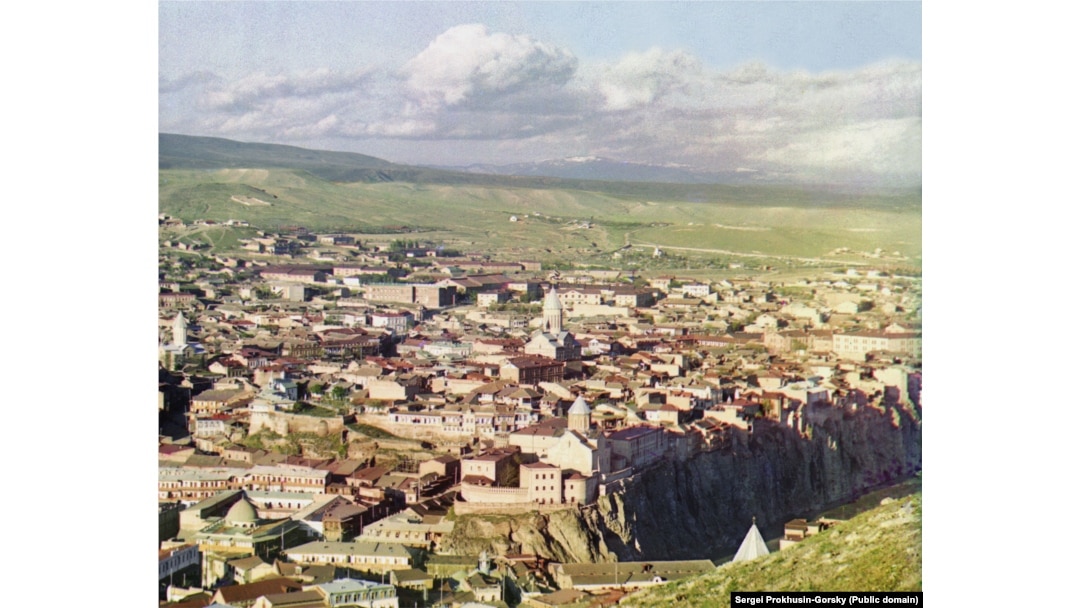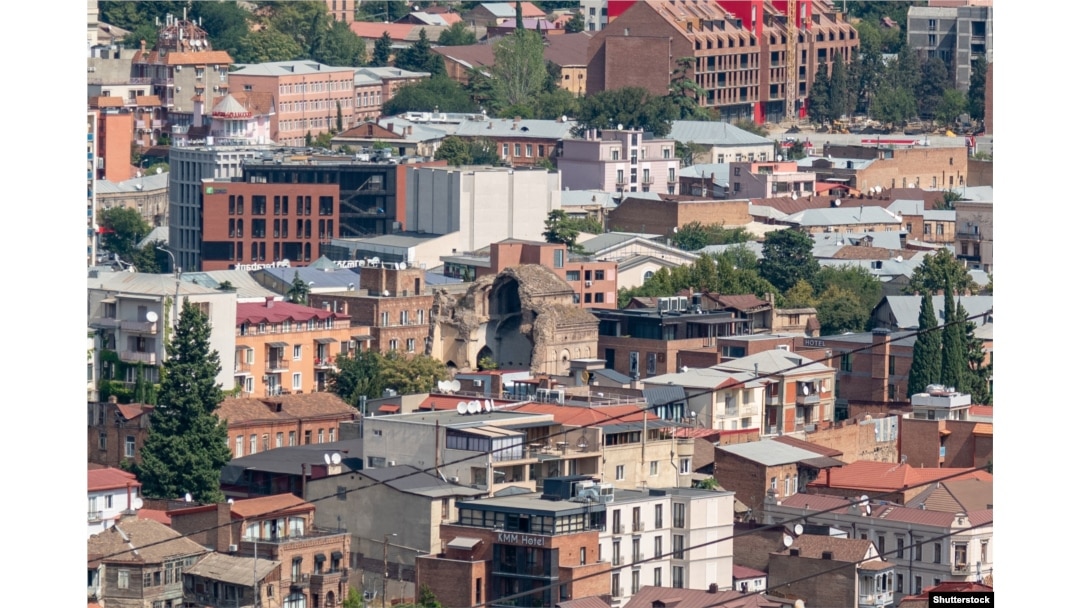In the earliest known color photograph of Tbilisi, taken around 1910, one pointed church dome stands out above the rest. It is the spire of the evocatively named Church of the Red Gospel, also known as the Shamkoretsots Sourb Astvatsatsin Church.

A photo of Tbilisi taken sometime between 1909 and 1915. With its distinctive tall dome, the Church of the Red Gospel can be seen directly in the center of the image.
The Armenian church was built in the late 1700s in a neighborhood historically populated by ethnic Armenians, using donations from residents. The 40-meter-high church was one of Tbilisi’s most prominent landmarks for around 200 years.
Soon after the completion of the Church of the Red Gospel, cracks had already been reportedly noticed in its brick walls and in April 1989 the cupola collapsed.

The remains of the Church of the Red Gospel (center) seen in 2022
Armenians have historically been one of the largest ethnic minorities in Tbilisi, and they follow their own branch of Orthodox Christianity. The Georgian Orthodox Church and the Georgian authorities have frequently been criticized for the treatment of Armenian heritage in the country's capital city.
The ruins of the church in February 2024
Walking into the remnants of the building today, it is hard to imagine that just a few decades ago there was a functioning church here, and that worshippers walked on tiles under the rubble that now covers the ground inside.
A window inside the ruined church
Susana Khachaturian, a spokesperson for the Armenian Apostolic Orthodox Holy Church in Georgia, says that they have repeatedly reached out to the Georgian authorities over the Tbilisi church.
"In 2009, we appealed to the prime minister at the time, Nika Gilauri, to return the church to the Armenian diocese. We tried again in 2012 and 2015, but there was no response,” Khachaturian told RFE/RL's Georgian Service.
“Could the building have been preserved so that it was not completely destroyed? Now, every day, one brick, one stone is lost. Perhaps the day will come soon when nothing is left."
In 2007, the building was named as a site of cultural heritage in Georgia, but the status has not halted its decline.
A concrete truck is seen working on a construction site alongside the church, in Georgia's historic Armenian neighborhood.
Alongside the church when RFE/RL’s Georgian Service visited, a concrete mixer was at work and posters on the fence indicated that a four-story hotel will be built at the site soon. The main concern for some residents is the risk the “protected” monument poses.
“It's dangerous. Can't you see how that ruin is barely standing?” one said. “No one knows when it will fall and who it will fall onto.”
“Look at what is happening around it. All this heavy construction equipment is operating and the ground is shaking,” another local said. “When will it collapse, and will someone be inside when it does? Are they waiting for that?”
“Either completely demolish the building or restore it,” a third resident said.
The interior of the ruined church
For local art experts, the Armenian church still holds special significance.
"In the historical areas of all cities of the Middle Ages, dominant buildings from the early development of the city are distinguished,” Georgian art critic Tamar Amashukeli told RFE/RL. “These buildings stand out and serve to orientate people.
'This monument, along with many other places of worship in Tbilisi, had this function. Today, these buildings are disappearing under the intensive development of the city."
An archival photo of the Church of the Red Gospel (right) before its 1989 collapse
Amashukeli believes that, unless something drastically changes regarding the status of the church, it will end up as a "wreck surrounded by a large development, or it will collapse, which is a theoretical possibility."
"Unfortunately, we are erasing our history to make a new one just for the sake of making money," the Georgian art expert added. "We have no ambition for anything else, and that is very sad."

